Yasurime: Decorative File Marks on the Tang

What’s in this article?
The tang of a Japanese blade is finished with a decorative file pattern called yasurime. Various file marks are attributed to individual swordsmiths, schools, and different historical periods, providing valuable information about the sword’s age and origin.
Let’s explore the appearance of the yasurime, its various types, and how these file marks are examined in sword appraisal.
Appearance of the Yasurime
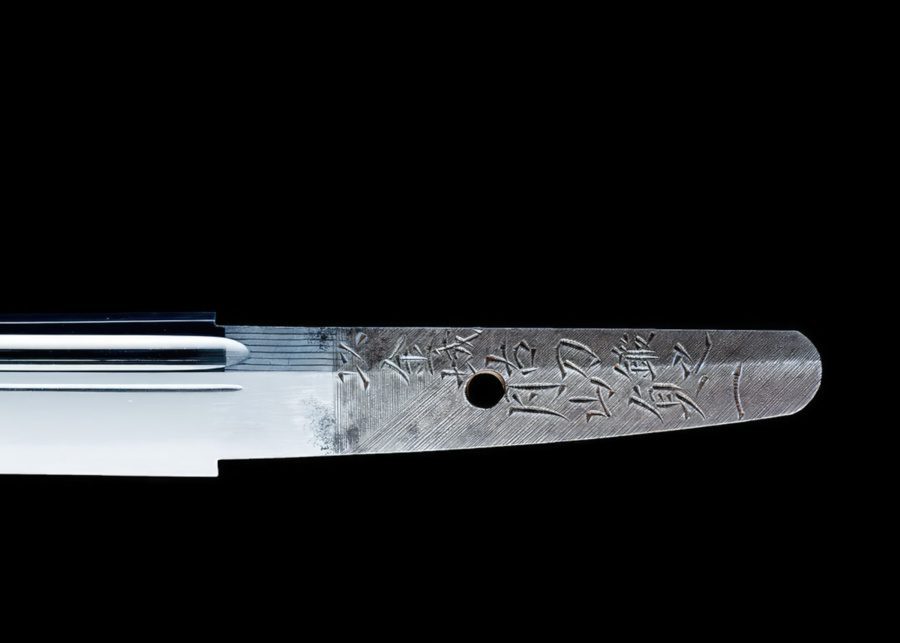
A Japanese blade features distinctive file marks, varying in patterns. The yasurime varies in depth, thickness, and spacing, depending on the file used by a swordsmith. The file marks are placed next to the habaki (blade collar), and both sides of the tang usually have the same filing pattern.
However, each surface of the tang must be filed separately: the ji (steel surface of the sword), the shinogi-ji (surface of the blade between the shinogi ridge line and the back surface), and the mune (unsharpened back surface of the blade).
Types of Yasurime
Several different yasurime patterns are used on traditionally-made Japanese sword (nihonto) tangs. The style of filing varies in different swordsmiths, schools, and periods. However, old blades from the Koto era, about 1000 to 1600, may have worn out file marks because of their age.
1. Kiri (Horizontal)
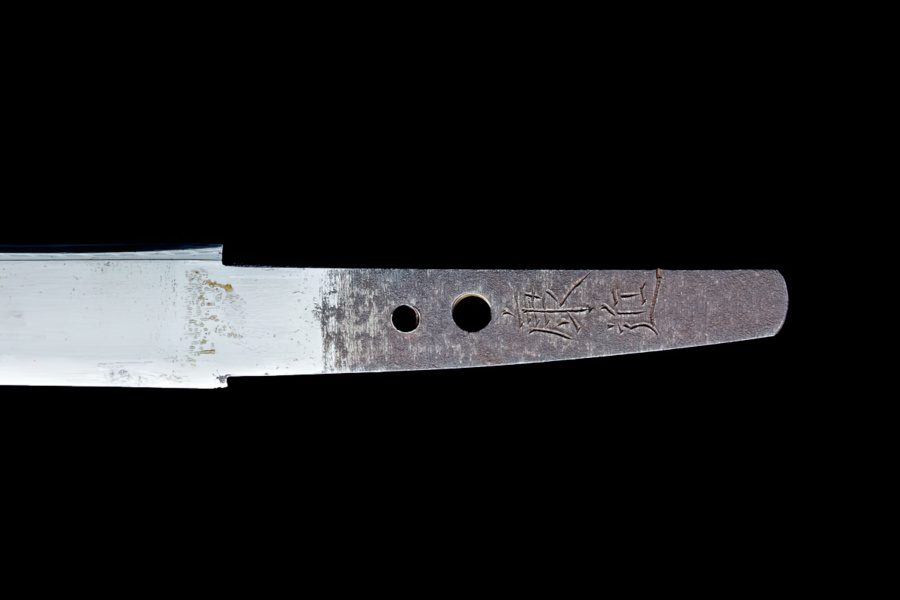
The kiri yasurime refers to straight, horizontal file marks. It is the most popular type of yasurime, filed horizontally from edge to back. It is also known as yoko yasurime. It is often found on blades from the Awataguchi and Rai schools of the Yamashiro tradition and the Shikkake school of the Yamato tradition.
2. Katte Sagari (Downward Slanting)
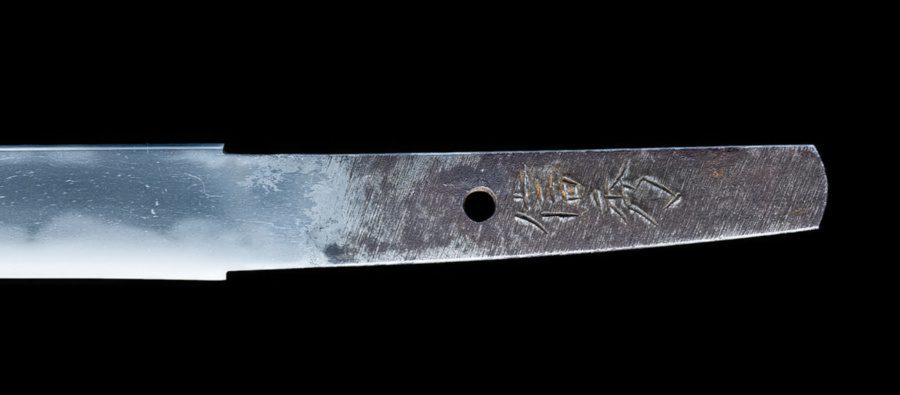
The katte sagari refers to file marks slanting downwards to the right, from the top left to the bottom right. However, it has a very shallow angle, usually less than 45 degrees. It is the second most popular style, after the kiri, throughout all periods. The katte sagari is also found on blades from the Awataguchi, Rai, and Shikkake sword making schools.
3. Katte Agari (Upward Slanting)
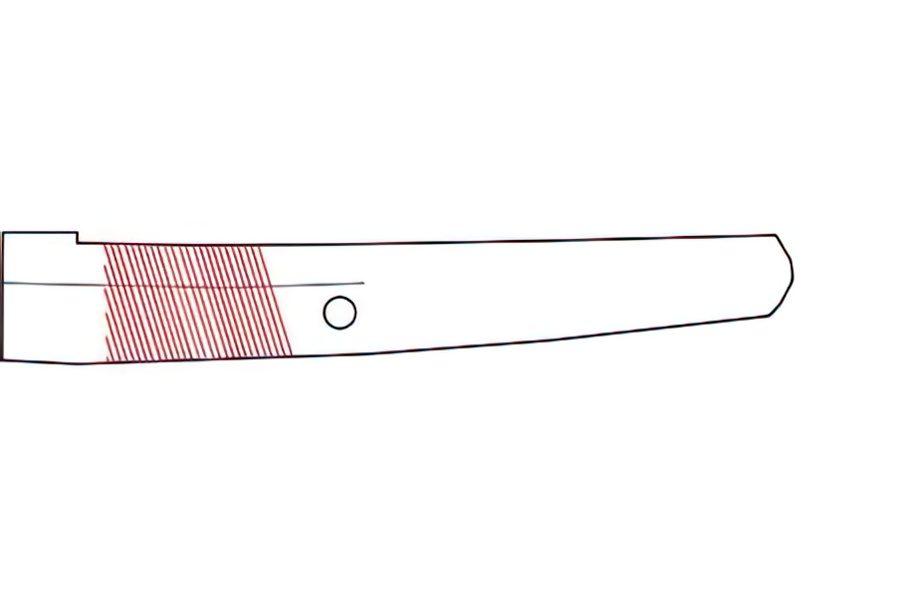
The katte agari refers to the file marks slanting up to the right, from the bottom left to the top right. It is the opposite of the katte sagari. It also has a very shallow angle, less than 45 degrees.
4. Sujikai (Diagonal)
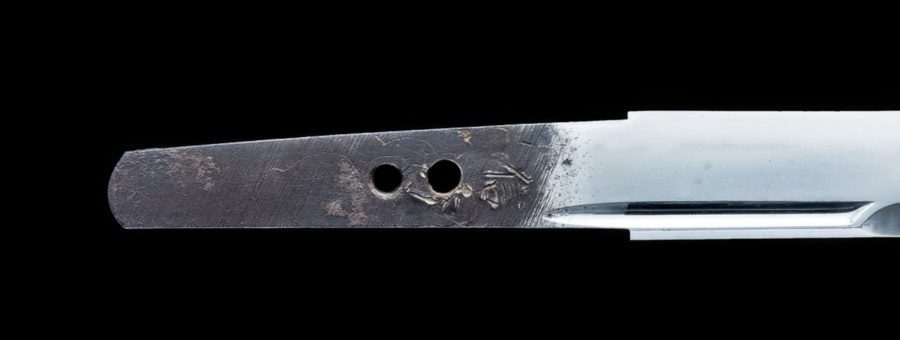
The sujikai refers to diagonal file marks, slanting from the upper left to the lower right. It slants steeper than the previous katte sagari. The steeper variety of the sujikai is called o-sujikai (great sujikai). The o-sujikai is seen on blades by the Aoe, Samonji, and Horikawa schools.
However, the opposite of the o-sujikai is saka o-sujikai, which slants steeply upward from left to right. It slants steeper than the previous katte agari and appears only on Shinto blades, such as those forged by swordsmith Horikawa Kuniyasu.
5. Takanoha (Hawk’s Feather)

The takanoha refers to file marks slanting downwards on each side of the tang’s centerline, resembling a hawk’s feather. The ridged side of the tang (shinoji-ji) slants downward to the right, while the edge side of the tang (hiraji) slants downward to the left. These V-shaped file marks were seen in the blades of the Yamato tradition and related sword making schools in the Koto era.
However, the opposite of the takanoha is saka takanoha, featuring an inverted V-shaped pattern. The file marks on the shinogi-ji slant upwards to the right, while those on the hiraji slant upwards to the left. It is mainly seen in blades from the Yamato and Mino provinces.
6. Kesho (Cosmetic File Marks)
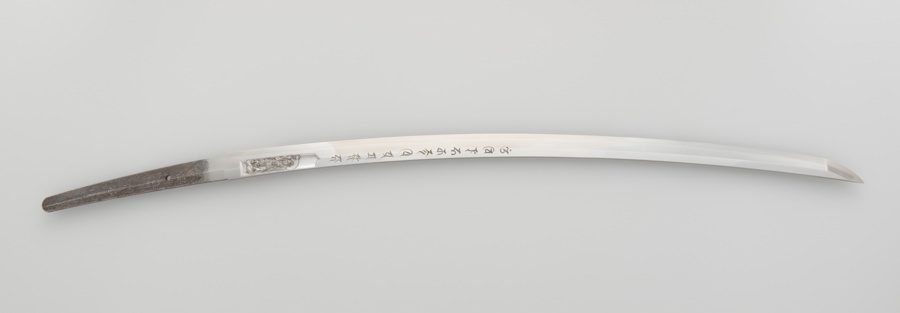
Kesho yasurime, also kesho yasuri, literally means cosmetic file marks. It features combinations of slanting and horizontal file marks, with the slanting file marks covering most of the tang. The file marks can follow two or three directions and are called nidan-kesho and sandan-kesho, respectively.
The kesho yasuri only appears on Shinto and later blades, though there were variations in blades of various swordsmiths and schools. It was only used by swordsmiths of the Edo period, from 1603 to 1867 and after.
7. Higaki (Cross-Hatched)
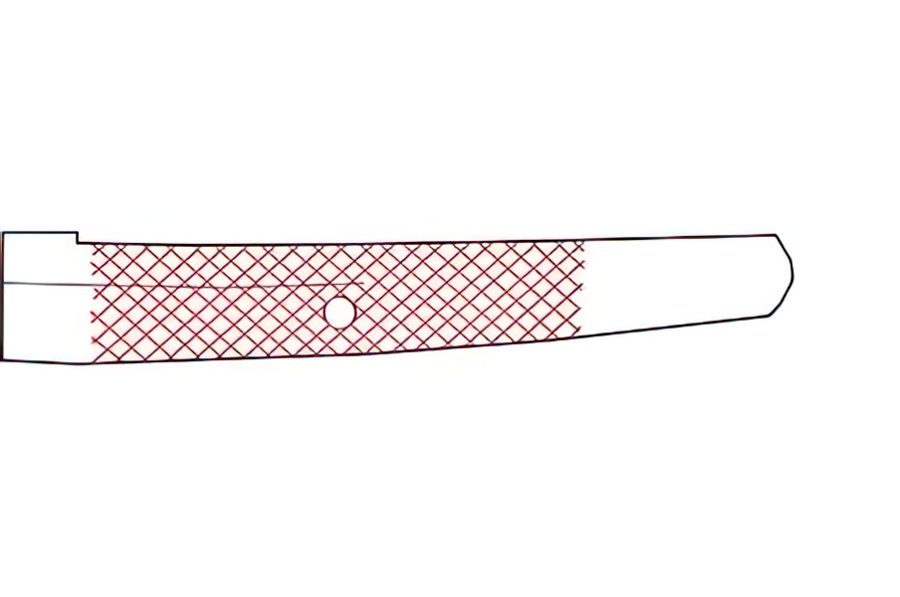
In general, the term higaki refers to a fence made of thin strips of Japanese cypress. The higaki yasurime is filed in a cross-hatched pattern, with slanted file marks going in both directions, similar to the woven pattern on the fence. It is widely seen on blades from the Yamato and Mino traditions and the Naminohira school in the Koto era.
8. Sensuki (Shaved)

The term sensuki literally means plane drawing, and it has irregular vertical strokes. It is a variant of tang finish shaved using a sen—a tool similar to a plane for shaping wood. Early sword tangs, usually of double-edged ken or tsurugi, were shaved rather than filed, so this style is mainly seen on jokoto blades, dating before 1000. The sensuki also appeared on early Koto-era swords and sometimes on Mino blades of the Muromachi period, from 1338 to 1573.
Facts About the Yasurime
The terms yasuri and yasurime mean files and file marks, respectively. They are often used to describe the file marks or strokes on the tang. However, they should not be confused with the mei or the swordsmith’s signature on the tang.
The file marks are crucial in sword appraisal.
The tang of a Japanese sword is called nakago, which is examined when appraising a blade. The styles of yasurime differ with various periods, swordsmiths, and schools, providing considerable information about a sword. Other features examined include the overall shape of the tang and the mekugi-ana—the rivet holes that hold a bamboo peg mekugi. The mei is also examined, from the method of engraving the signature to its position on the tang.
The clarity of the yasurime on the tang helps date the sword.
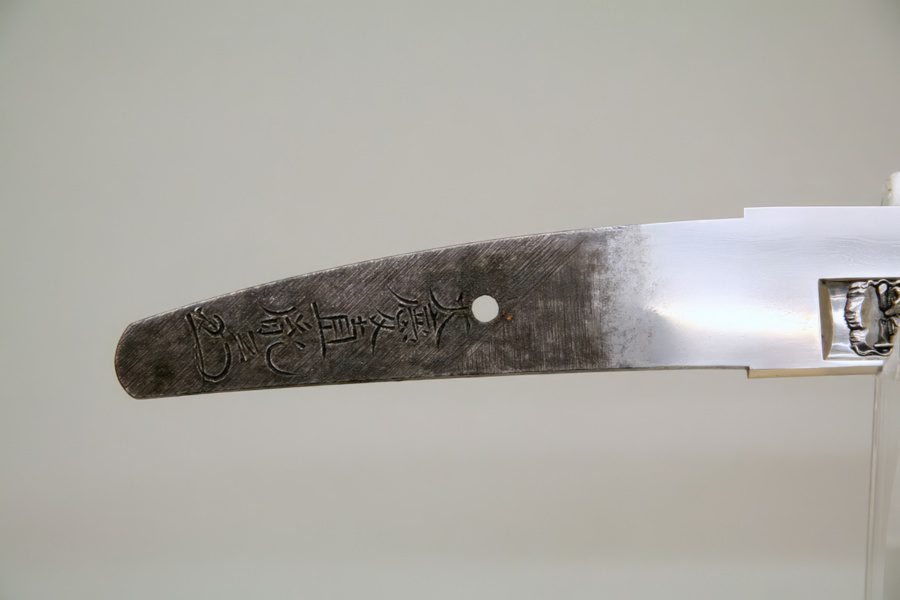
The tang of a Japanese sword is never cleaned or polished throughout the lifetime of the blade. The color of the rust that builds up on the tang and the remaining file marks are important indicators of the sword’s age. Therefore, cleaning the tang of an old blade will only destroy its value.
The yasurime is added on the tang before a swordsmith chisels his signature.
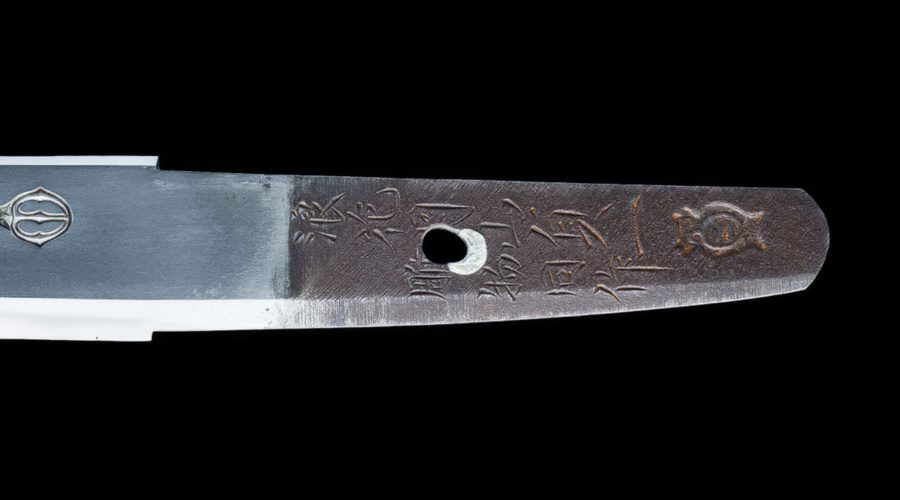
When a new blade is completed, a swordsmith will file a decorative pattern on the tang, then inscribe his name. The mei features the name and other information the smith or the owner might want into the tang. It may include where the swordsmith lives, the date when he made the blade, and the name of the person for whom he made it.
The yasurime on the tang is shown on the oshigata.
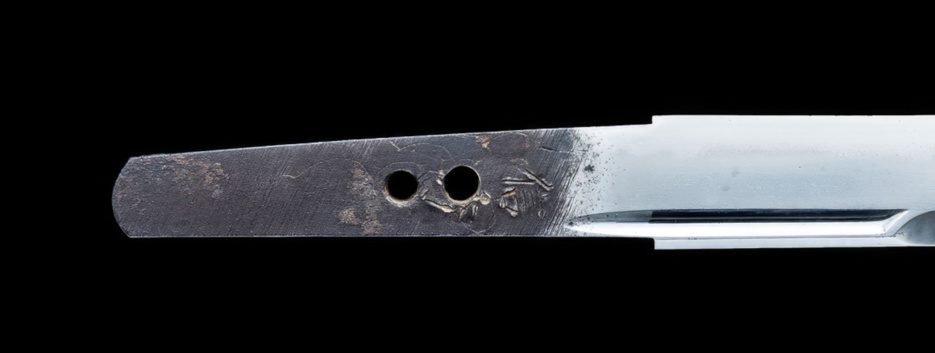
The oshigata are accurate drawings of Japanese blades, including their file marks, the mei on the tang, if it is present, the hamon (temperline pattern), and other subtle characteristics on the surface. These drawings are more accurate than photographs and help in identifying a blade to a swordsmith or school.
The term yasurime can also be used to describe the file marks on sword fittings.
Tsuba is the Japanese term for a sword guard. It may feature various file marks that can be described based on appearance. Popular types include the amida-yasuri (radial line filing), in which a tsuba resembles the charcoal cross-section. Some sword guards have okina-yasurime, featuring concentric circles similar to marks created by a potter’s wheel.
The term yasurime sometimes describes the file marks on kozuka and kogai.
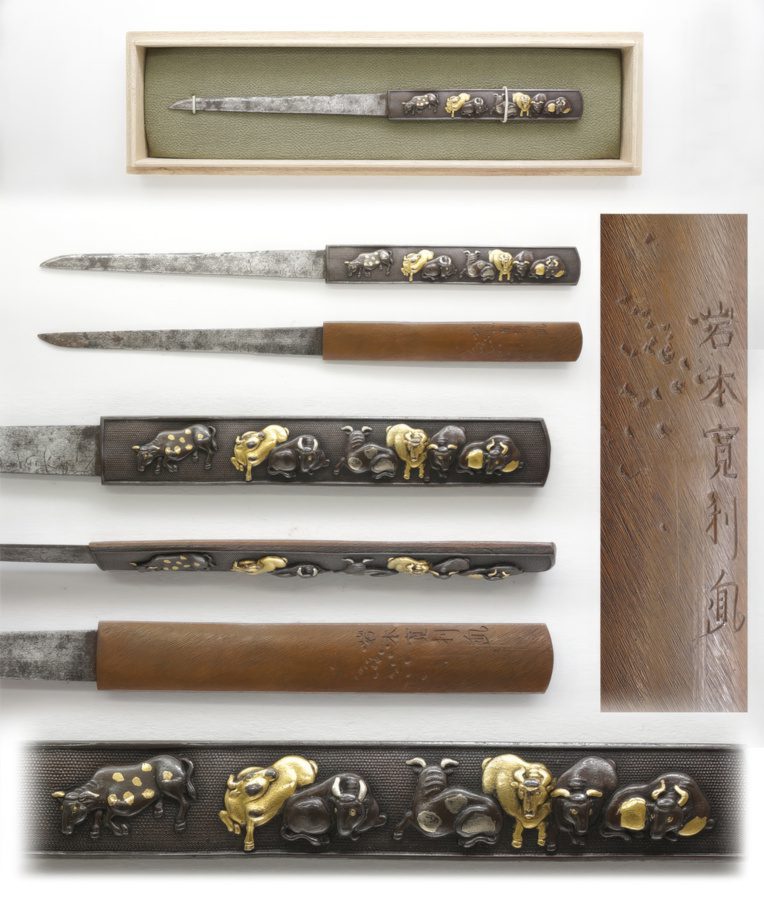
Kozuka is the handle of the utility knife kogatana, while kogai is a hairdressing tool. Both became fashionable sword accessories, often carried in pockets in a wakizashi and tanto‘s scabbard (saya). Their back plates may feature slanting file marks resembling a drizzle (shigure) and are described as shigure-yasurime. If the file marks are finer and denser, they are called sujikai-yasurime.
Other bladed weapons also feature file marks on their tang.
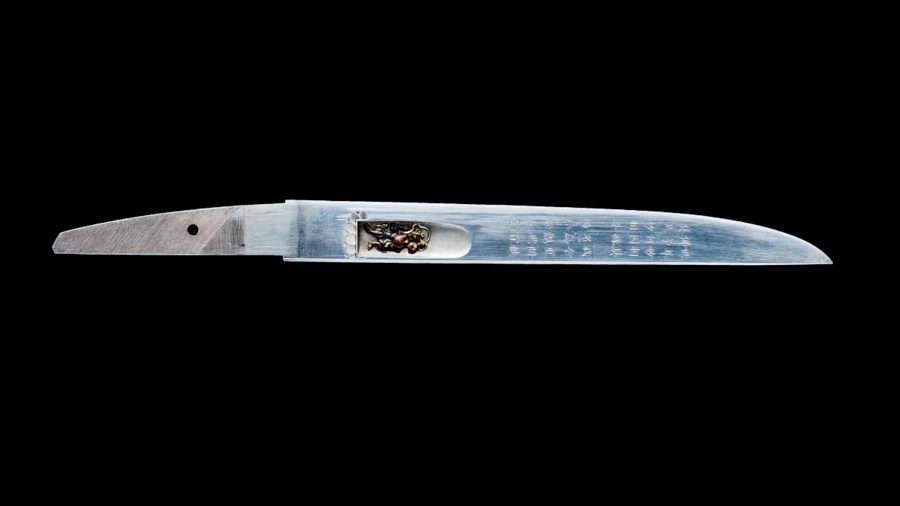
Apart from katana and wakizashi, other bladed weapons, such as tanto daggers and Japanese polearms yari and naginata, also featured yasurime on their tangs. Some jumonji yari, a triple-bladed spear variety, had straight (kiri) and diagonal file marks (sujikai). Other yari and naginata polearms had the sensuki yasurime, featuring irregular vertical lines.
Conclusion
The surface of the tang of a Japanese blade is finished with file marks called yasurime. Individual swordsmiths and different sword making traditions employed unique filing patterns, revealing information about the sword’s age and origin. For this reason, it is of great importance in sword appraisal.




